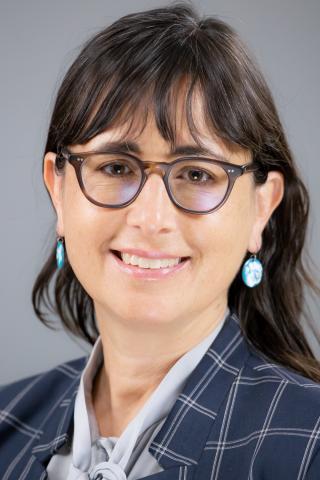About the Speaker
María B. Vélez is an Associate Professor in the department of Criminology and Criminal Justice at the University of Maryland-College Park. Her general interests are to understand how stratification along racial-ethnic, political, and economic lines shapes and is shaped by the uneven patterning of crime and justice outcomes. Dr. Vélez serves as the Co-Director of Racial Democracy Crime and Justice Network (RDCJN) with Dr. Rod Brunson (UMD). She recently served on the consensus panel sponsored by the National Academies, "Reducing Racial Inequality in Crime and Justice: Science, Practice, and Policy."
About the Presentation:
The historical practice of redlining—where the government-sponsored Home Owner’s Loan Corporation (HOLC) graded neighborhoods based on credit-worthiness in the 1930s—has left lasting consequences on many communities across the United States. Redlining maps, which marked areas deemed "risky" for investment, used an A-D scale to categorize neighborhoods. Areas graded “A” were considered prime for investment, while neighborhoods labeled with a “D” were “redlined,” systematically excluding them from financial support and development.
This discriminatory policy has resulted in long-term inequities in investment, development, and overall community well-being. More recent research has even linked the legacy of redlining to higher rates of neighborhood crime and violence. But is it possible for neighborhoods to overcome this historical disadvantage?
In her presentation, María B. Vélez, from the University of Maryland’s Department of Criminology and Criminal Justice (UMD CCJS), explores this very question. Building on the revitalization thesis, Vélez examines how Latino immigration may help disrupt the patterns set by redlining. Specifically, she will focus on how Latino immigrant communities can potentially counter the historical trajectory of disadvantage, disinvestment, and violence often associated with redlined areas.
Using San Antonio, Texas as a case study, Vélez will analyze homicide data from 1950 to 2011 to examine how redlined neighborhoods have evolved over time. Her findings suggest that not all redlined neighborhoods experience the same fate. Particularly, those with higher levels of Latino immigration and a significant share of co-ethnic residents tend to experience lower rates of violence compared to other redlined areas with fewer immigrants.
Vélez’s research highlights the importance of understanding the complexity of neighborhood revitalization and cautions against structural determinism. While institutionalized policies like redlining undeniably impact neighborhoods, the potential for Latino immigrant revitalization demonstrates that neighborhoods are not bound to a fixed trajectory of decline.
Join us for this insightful presentation as we discuss the long-lasting effects of redlining and the ways in which Latino immigration could reshape the future of historically disadvantaged communities.
Monday, May 5th @ 12:00 - 1:00 PM
Location 2208 LeFrak Hall* Note Location. Map link for approx point in the building for your reference.
Note: This seminar will be held as an in-person event that will also be held hybrid for those unable to attend in person. For the best experience of the speaker, we encourage in-person attendance for all possible



